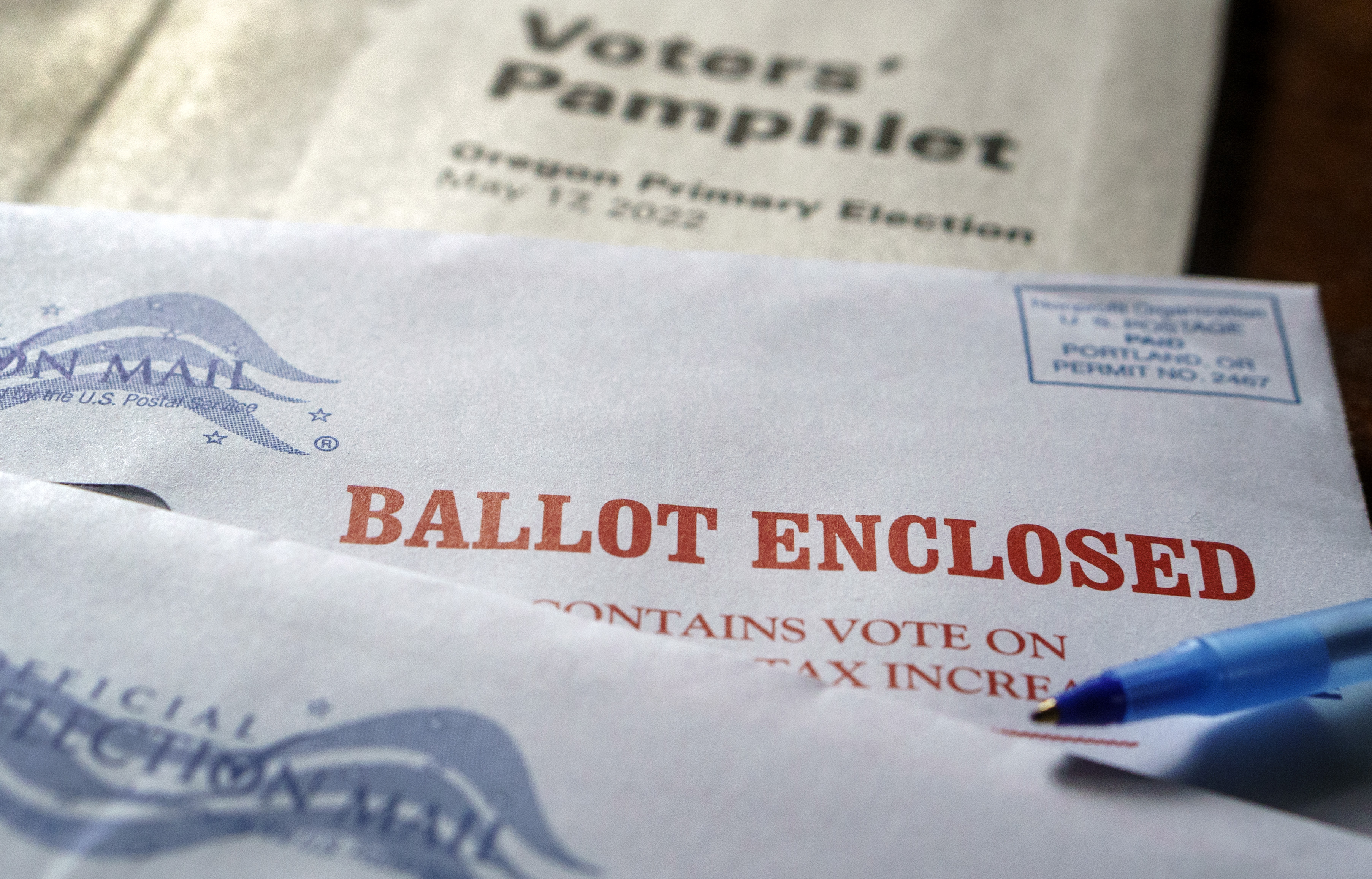
Ballots have been mailed in preparation for the Oregon Primary Election taking place on May 17, 2022.
Kristyna Wentz-Graff / OPB
After the 2022 midterm elections, Oregon voting officials had reason to celebrate.
Oregon’s 62% voter turnout was not only well above the national average, but the best in the country. Then-Secretary of State Shemia Fagan credited the state’s robust vote-by-mail system.
“In every corner of Oregon, the state of our vote-by-mail system is strong,” Fagan said in a press release. “I want to thank the elections workers around Oregon whose integrity and hard work makes our democracy work.”
But statewide turnout data didn’t tell the whole story.
Rural counties with significant Latino populations posted some of the worst turnout statistics in the state. Umatilla County’s 53.3% turnout — while substantial compared to other state averages — was dead last among Oregon counties in 2022. Malheur County, meanwhile, barely edged out Umatilla and Morrow counties to round out the bottom three. All three are at least one-quarter Latino.
As Oregon prepares for its primary elections in May and the general election in November, the Hermiston Hispanic Advisory Committee wants to see more Latinos engaged in selecting local and state leaders.
Founded more than a decade ago to better serve Hermiston’s growing Latino community, the committee has started discussing how to increase voter participation within the city.
“I think a lot of us here that are in this area, the Latino community especially, have recognized that our voter turnout is very low and it’s very weak,” Hermiston City Councilor Roy Barrón, a liaison to the committee, said.
Low turnout among Latinos isn’t just an Eastern Oregon problem. Nationally, Latinos have long lagged behind other groups in election participation.
Latinos are less likely to vote without individual outreach, prof says
Menlo College political science professor Melissa Michelson studies Latino politics and has previously looked at rural Latino voting behavior in California’s Central Valley. She said Latino voter turnout is often driven by community groups dedicated to directly engaging with area residents about voting, groups that aren’t always present or active in rural communities.
“Without that individual outreach, Latinos are less likely to participate,” she said. “They’re more likely to think, ‘Here comes another election. That’s something the white people are doing. That’s not for me. That’s not for my community.’”
And when various groups do engage prospective Latino voters, Michelson said who’s delivering the message matters.
“In other words, it’s not flying in a bunch of well-meaning California liberals to go walk door-to-door in the rural neighborhoods of Oregon,” she said.
The candidates on the ballot also play a role, Michelson said. Although Eastern Oregon has long been dominated by white politicians, there are a growing number of Latino residents being elected to city councils, school boards and other local offices. The current four-way race for Hermiston mayor could not only lead to the city’s first Latino mayor, but also its first Black, woman or non-binary mayor depending on who voters choose. Michelson said Latino candidates for office can boost turnout but they have to be viable to generate voter enthusiasm.
“It doesn’t work if the Latino candidate has no chance,” she said. “It has to be there’s a Latino on the ballot and they actually have a shot at winning. That creates huge increases in turnout.”
In the middle of his second term on the city council, both of Barrón’s elections were contested. He said that working for votes in the Latino community was a key part of his campaigns.
“It was really (about) a lot of the groundwork, which was the door-to-door knocking, introducing myself,” Barrόn said. “And I also had a lot of people that believed in me that were also Latino. They were behind me and were able to go out and door-to-door knock for me too.”
Barrόn said it’s still too early to see what the committee’s voter engagement campaign would look like, but he would like to see the group target young people who are considering voting for the first time. If Hermiston youth could be encouraged to start voting early, Barrόn said, it could turn into a lifelong habit.
Michelson agreed, adding that potential first-time voters can be intimidated by all the research needed to make an informed decision on the candidates and issues. But if voters overcome that barrier, the self-satisfaction of voting makes them much more likely to vote again.
With the primary less than two months away and a general election before the end of the year, there isn’t much time to engage Latino voters. Barrón said he views this as a long term project for the committee that requires time, support and resources. The state is aware that not all Oregon voters speak English as their first language. In 2021, the Legislature passed a bill requiring counties to publish voter pamphlets in their area’s most common languages, including Spanish.
The committee is reaching out to organizations like the League of Women Voters of Oregon to see if they can develop a partnership for their effort, he said.
